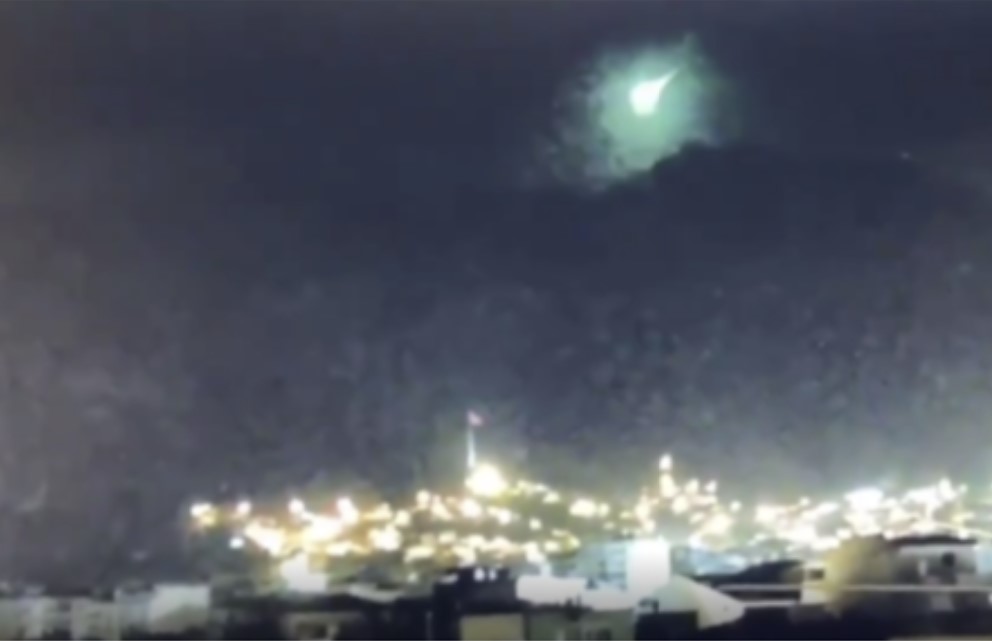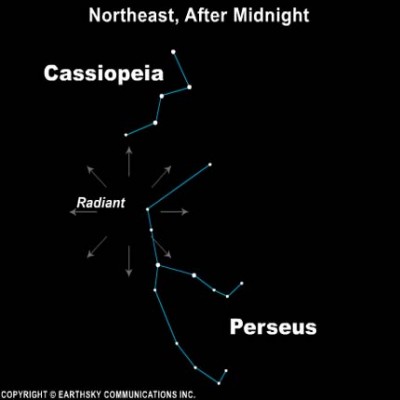
Every year, from around July 17 to August 24, our planet Earth crosses the orbital path of Comet Swift-Tuttle, the parent of the Perseid meteor shower. The bits and pieces from Comet Swift-Tuttle slam into the Earth’s upper atmosphere at some 130,000 miles (210,000 km) per hour, lighting up the nighttime with fast-moving Perseid meteors.
The 2021 Perseid meteor shower is expected to produce the most meteors in the predawn hours of August 11, 12 and 13, in a dark, moonless sky.
Meanwhile, skywatchers can already observe amazing balls of fire falling in the night sky. Here some amazing videos of the latest lucky sightings…
1. Doomsday fireball over Izmir, Turkey – July 31, 2021
The sight of a meteor lighting up the sky is usually described with the word “mesmerizing” or “incredible”. Yet, the celestial body that flew over the Turkish city of Izmir at around 2 a.m. local time did not evoke positive feelings.
In fact, it prompted a doomsday scare among residents.
2. Huge fireball over Spain – July 31, 2021
A stunning Perseid fireball was recorded over Spain on 2021 July 31, at 23:18h local time.
The fireball began at a height of about 139 km and ended at an altitude of around 81 km above the ground level.
3. Fireball over New England, USA – July 30, 2021
A fireball shot across the night sky over New England on Friday around 11:15 p.m., according to the American Meteor Society (AMS), which received more than 85 reports from Connecticut, Massachusetts, Maine, New Hampshire, Rhode Island, Vermont New Jersey and New York, as well as Canada.
A major event indeed!
4. Bright meteor over Brazil – July 28, 2021
The meteor exploded over the coast of Santa Catarina around 2:05 am on July 28th during a 3 second disintegration.
5. Meteor over Michigan, Ontario and Wisconsin – July 26, 2021
AMS received 21 reports about a fireball seen over MI, Ontario and WI on Monday, July 26th 2021 around 05:26 UT.
Amazing video below:
The Perseid Meteor Shower
The Perseids happen every year. Their parent comet – Swift-Tuttle – takes about 130 years to orbit the sun once. It last rounded the sun in the early 1990s and is now far away. But we see the Perseids each year, when Earth intersects the comet’s orbit, and debris left behind by Swift-Tuttle enters our atmosphere.
Here’s how to get the most from this year’s shower.
1. Find a wide-open sky.
2. Watch from midnight to dawn. That’s when the part of Earth you’re standing on will be heading into the meteor stream in space. So you’ll see more meteors.
3. Know where to watch. By dawn, meteors will be raining down from overhead. Be aware that the Perseid meteors will start to fly in mid-to-late evening from northerly latitudes. South of the equator, the Perseids start to streak the sky around midnight.

4. You want a dark sky for watching meteors.
5. Give yourself at least an hour of observing time, because the meteors in meteor showers come in spurts and are interspersed with lulls.
6. Enjoy the comfort of a reclining lawn chair. Bring along some other things you might enjoy also, like a thermos filled with a hot drink.
7. The moon won’t be a factor for the Perseids’ peak this year.
8. Consider watching after the peak. People tend to focus on the peak mornings of meteor showers, and that’s entirely appropriate. But meteors in annual showers – which come from streams of debris left behind in space by comets – typically last weeks, not days.
9. All good things come to those who wait. Find a good spot, watch, wait. You’ll see some.
10. As the Perseids are rising to their peak, the Delta Aquariid meteor shower will still be rambling along steadily. You’ll see mostly Perseids, but also some Delta Aquariids in the mix.
If fortune smiles upon you, the evening hours might offer you an earthgrazer, a long, slow, colorful meteor traveling horizontally across the evening sky. Earthgrazer meteors are rare but memorable. Perseid earthgrazers appear before midnight, when the radiant point of the shower is close to the horizon.
Happy stargazing and post your pictures and videos in the comments! Thank you!
Now subscribe to this blog to get more amazing news curated just for you right in your inbox on a daily basis (here an example of our new newsletter).
You can also follow us on Facebook and/ or Twitter. And, by the way you can also make a donation through Paypal. Thank you!
You should really subscribe to QFiles. You will get very interesting information about strange events around the world.














https://www.timeanddate.com/astronomy/meteor-shower/perseid.html
Check the interactive map of the night sky. Pretty cool.
I got my reclining chair by the pond all set. Little table next to it for my Grape Julius. Usually it gets cloudy, but patches of sky may offer visible sights.
That fireball in Turkey was like the one we saw up in the mountains a few years back around 0405hrs. Once you see one, you can play it back in your head like a movie too. Tornados are a close second place after fireballs.
I’m doing a full hour outside, and see if I get some fireball action. Taking my camera too.
Didn’t see one far away shooting star, but it was patchy. Now, we have clear skies for four days, so probability goes way up as we close on 8/11ish.
I’m still trying for a good picture. Maybe I will get a lucky strike?